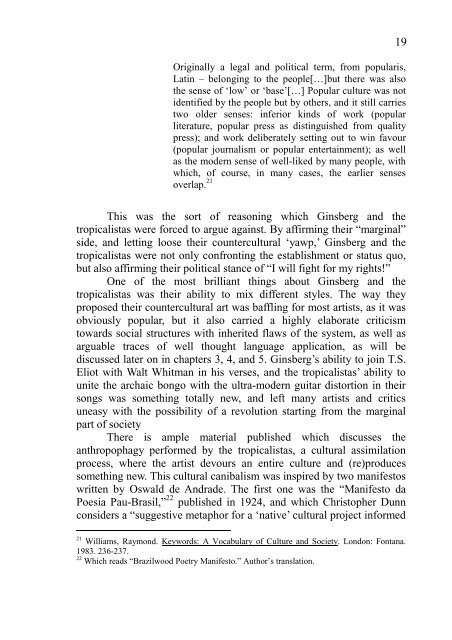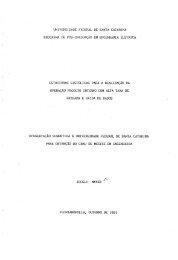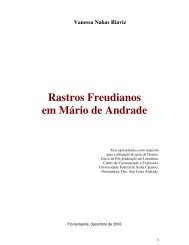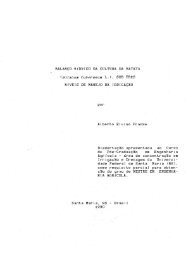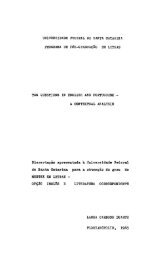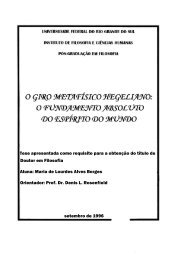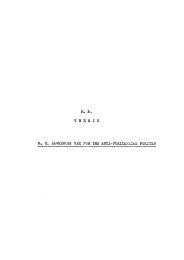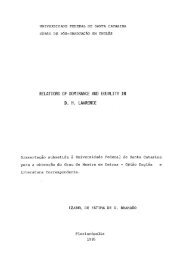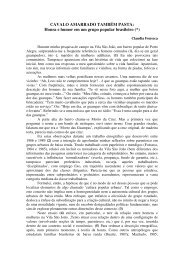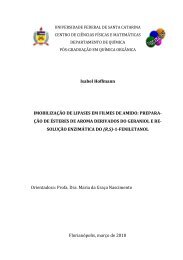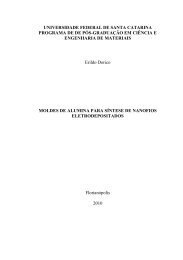Tropical ginsberg
Tropical ginsberg
Tropical ginsberg
Create successful ePaper yourself
Turn your PDF publications into a flip-book with our unique Google optimized e-Paper software.
19<br />
Originally a legal and political term, from popularis,<br />
Latin – belonging to the people[…]but there was also<br />
the sense of ‘low’ or ‘base’[…] Popular culture was not<br />
identified by the people but by others, and it still carries<br />
two older senses: inferior kinds of work (popular<br />
literature, popular press as distinguished from quality<br />
press); and work deliberately setting out to win favour<br />
(popular journalism or popular entertainment); as well<br />
as the modern sense of well-liked by many people, with<br />
which, of course, in many cases, the earlier senses<br />
overlap. 21<br />
This was the sort of reasoning which Ginsberg and the<br />
tropicalistas were forced to argue against. By affirming their “marginal”<br />
side, and letting loose their countercultural ‘yawp,’ Ginsberg and the<br />
tropicalistas were not only confronting the establishment or status quo,<br />
but also affirming their political stance of “I will fight for my rights!”<br />
One of the most brilliant things about Ginsberg and the<br />
tropicalistas was their ability to mix different styles. The way they<br />
proposed their countercultural art was baffling for most artists, as it was<br />
obviously popular, but it also carried a highly elaborate criticism<br />
towards social structures with inherited flaws of the system, as well as<br />
arguable traces of well thought language application, as will be<br />
discussed later on in chapters 3, 4, and 5. Ginsberg’s ability to join T.S.<br />
Eliot with Walt Whitman in his verses, and the tropicalistas’ ability to<br />
unite the archaic bongo with the ultra-modern guitar distortion in their<br />
songs was something totally new, and left many artists and critics<br />
uneasy with the possibility of a revolution starting from the marginal<br />
part of society<br />
There is ample material published which discusses the<br />
anthropophagy performed by the tropicalistas, a cultural assimilation<br />
process, where the artist devours an entire culture and (re)produces<br />
something new. This cultural canibalism was inspired by two manifestos<br />
written by Oswald de Andrade. The first one was the “Manifesto da<br />
Poesia Pau-Brasil,” 22 published in 1924, and which Christopher Dunn<br />
considers a “suggestive metaphor for a ‘native’ cultural project informed<br />
21<br />
Williams, Raymond. Keywords: A Vocabulary of Culture and Society. London: Fontana.<br />
1983. 236-237.<br />
22<br />
Which reads “Brazilwood Poetry Manifesto.” Author’s translation.


